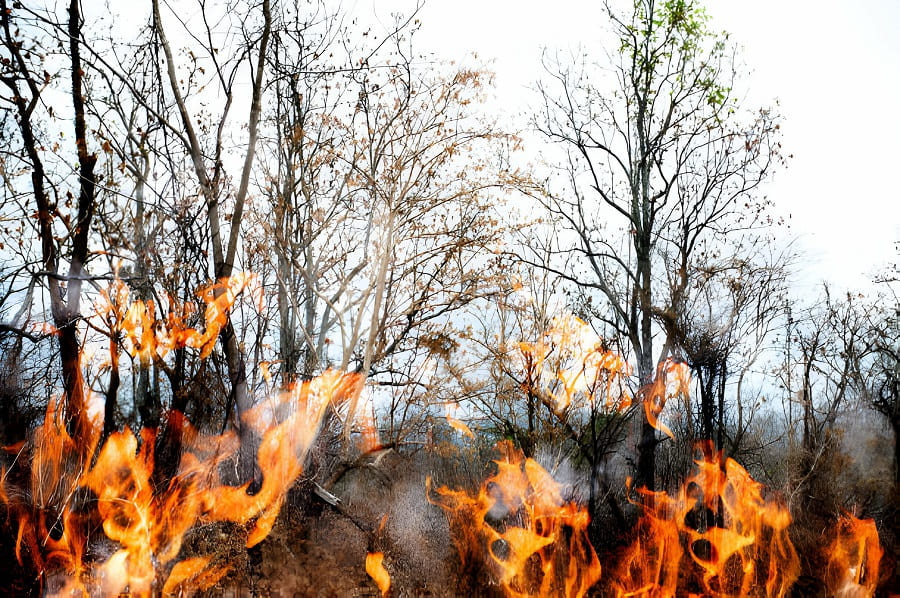Why the burning bush is bad for our ecosystem?
POSTED ON February 19, 2024 BY Galena Lawn Care
The great outdoors seem beautiful and mesmerizingly so! However, they also conceal hidden dangers which threaten the ecosystem. One such peril spreading its roots silently in our ecosystem is the burning bush, known in scientific circles as “Euonymus Alatus”. It is an invasive plant species. Its vibrant red foliage may be eye-catching, but the ornamental shrub is far from benign in the impact it has on the ecology. Now, you may wonder why the burning bush is bad. This is precisely what we will try to explore over here by looking at factors such as its invasive nature and adverse ecological impact.
Invasive nature of the burning bush
The burning bush hails from Asia and was introduced as an ornamental shrub, but it has fast become a major threat to the native plant population of North America. It is adaptable and possesses aggressive growth habits thus making it a formidable competitor in different ecosystems. It always outcompetes the local species for valuable resources such as sunlight, nutrients, and water. Its invasive nature lets it establish its dense monocultures thus suppressing the growth of other plants and disturbing the delicate balance of the local ecosystems.
Biodiversity decline
Why do you think the burning bush is bad? Well, this is a major reason why the shrub is considered to be such a threat. This is one of the most alarming effects of having a burning bush in an area. Since this invasive species dominates the landscape it is a part of it completely overshadows the native plants and reduces the variety of plant species in an area. Native flora is crucial for supporting the local fauna and it struggles to survive due to the oppressive presence of the burning bush. This disruption has a cascading effect on the entire ecosystem affecting wildlife such as birds and insects.
This is crucial because these entities depend on diversity in vegetation for their food and habitat.
Altered soil composition
It is not as if the burning bush has a bad effect on the surface world only. The shrub grows rapidly and has a dense root system that changes the soil composition in an area thus harming its nutrient content and overall structure. The roots of the burning bush are fibrous and shallow which drains away essential nutrients from the soil and makes it hard for other plants to thrive. This change in soil composition also heightens the challenges faced by the local vegetation for survival and makes the entire ecosystem a lot less healthy.
Increased fire risk
It is not that the burning bush is a metaphorical threat – it is a fire hazard. The foliage of the plant is eminently flammable, and since it creates dense thickets, it can lead to wildfire in affected areas. So in regions vulnerable to dry spells, this shrub poses a fire threat as it can fuel wildfires. This, in turn, can immensely endanger both the human communities and the natural habitats over there.
Cultural shifts and alternative landscaping
If you want to address the menace of the burning bush you would need a cultural shift as far as your landscaping choices are concerned. Landscapers and homeowners often select this plant because of its immense aesthetic appeal, but they do not comprehend the results this would lead to in terms of ecology. Significantly, people are educated about how invasive this species is, and they should also use native non-invasive alternatives so that its proliferation can be curbed. Guidelines and policies also need to be implemented so that its cultivation and sale are restricted.
Community involvement and restoration efforts
Local communities need to be engaged more so that such invasive species can be managed the best and restoration projects are also crucial for fighting the spread of the burning bush. Community-based programs like organized removal of the burning bush and efforts at restoring native plants can help reclaim areas run over by this invasive species. Environmental organizations need to collaborate with concerned citizens and local governments to address the ecological threat effectively that the burning bush poses.
Conclusion
So, we hope that now you know why is the burning bush is bad. The burning bush once used to be a symbol of beauty in landscapes and gardens but has now become an ecological menace that can have far-reaching consequences on any ecosystem. It has an invasive nature and always impacts biodiversity adversely. It also alters soil composition and has an increased fire risk. If you are concerned with this plant growing in your backyard, you can seek professionals such as Galena Lawn Care to get it sorted.